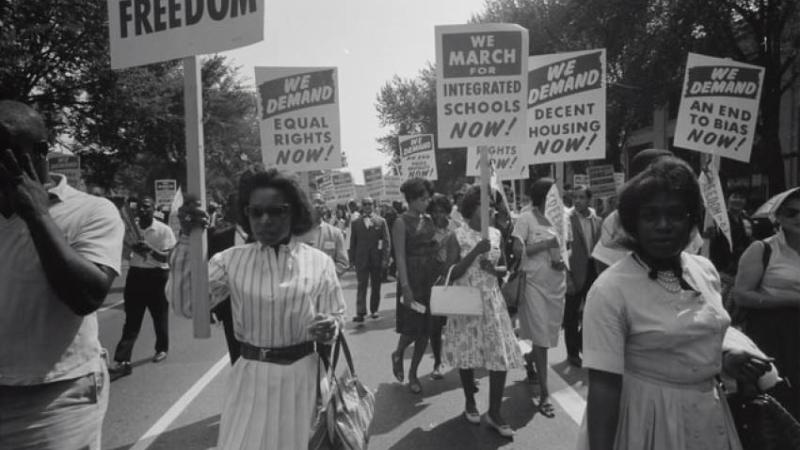
HeinOnline’s Civil Rights and Social Justice database brings together a diverse offering of publications covering civil rights in the United States as their legal protections and definitions are expanded to cover more and more Americans. Containing links to more than 500 scholarly articles, hearings and committee prints, legislative histories on the landmark legislation, CRS and GAO reports, briefs from major Supreme Court cases, and publications from the Commission on Civil Rights, this database allows users to educate themselves on the ways our civil rights have been strengthened and expanded over time, as well as how these legal protections can go further still. A varied collection of books on many civil rights topics and a list of prominent civil rights organizations help take the research beyond HeinOnline.
A person’s civil rights ensure protection from discrimination based on race, gender, sexual orientation, national origin or ethnicity, religion, age, and disability. While often confused, civil liberties, on the other hand, are basic freedoms outlined in the Bill of Rights and Constitution. The lifeblood of civil rights protections in the United States is the Equal Protection Clause of the Fourteenth Amendment. Ratified in 1868, the Fourteenth Amendment is the middle of the three Reconstruction Amendments passed in the aftermath of the Civil War. The Thirteenth Amendment, ratified in 1865, abolished slavery and involuntary servitude except for persons convicted of a crime; the Fourteenth Amendment granted citizenship to all persons born in the United States, afforded due process protections for persons against state and local governments, and granted equal protection to all people, whether citizens or not; and the Fifteenth Amendment, ratified in 1870, prohibits governments from denying citizens the right to vote based on “race, color, or previous condition of servitude.”
Despite these federal protections, laws passed at the state level throughout the former Confederacy shackled the full promise of these amendments. Federal court decisions, most infamously Plessy v. Ferguson in 1896, which originated the phrase “separate but equal,” gave teeth to Jim Crow laws that enforced racial segregation. Poll taxes, literacy tests, and whites-only primaries disenfranchised millions of Black voters.
These and similar discriminatory policies fermented in America for decades leading up to the Civil Rights Movement of the 1960s. In 1954, the Supreme Court ruled unanimously in Brown v. Board of Education that racial segregation in public schools violated the Equal Protection Clause of the Fourteenth Amendment. Following this came the murder of 14-year-old Emmett Till, the arrests of Claudette Colvin and Rosa Parks, the Freedom Rides of 1961, Martin Luther King Jr’s March on Washington, and many more catalyst events. Finally, the Civil Rights Act of 1964, initially proposed by President John F. Kennedy in June of 1963, was signed into law by President Johnson on July 2, 1964. The other major piece of legislation passed through the efforts of the Civil Rights Movement is the Voting Rights Act of 1965, which enforced the Fourteenth and Fifteenth Amendments by prohibiting any jurisdiction from implementing voting prerequisites that discriminate on the basis of race, color, or language.
However, the struggle for equality did not end with the Civil Rights Movement of the 1960s. The Black Power Movement of the 1960s and 1970s continued advocating for the empowerment of Black people through racial pride, self-sufficiency, and political and cultural institutions. In 1990, another landmark piece of civil rights legislation was passed—the Americans with Disabilities Act. In June of 2020, the Supreme Court ruled in Bostock v. Clayton County that Title VII of the Civil Rights Act protects employees against discrimination on the basis of sexual orientation and gender identity, the first such federal protections for LGBTQ employees. Today, the Black Lives Matter movement protests police brutality and racism, and advocates for economic, social, and political equality for Black people.
This database will help users learn how far our nation has come in fulfilling its promise of “all men are created equal” and how much further it still can go. Start your research here.